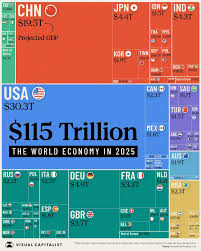The Road Ahead: Economy 2025
The year 2025 may seem like a distant horizon, yet it looms large for policymakers, economists, and everyday Canadians. With the ripples of the COVID-19 pandemic still impacting our economy, the approach we take now will define the economic landscape of the next decade. As we peer into the future, what can we expect from Canada’s economy in 2025, and how can we prepare?
Building Back Better
The pandemic has unveiled both weaknesses and opportunities within the Canadian economy. Traditional sectors like oil and gas have struggled, while technology and renewable energy sectors have surged. According to a recent CBC report, more than 40% of Canadians support investing in green technologies as a path toward recovery. This creates a dual opportunity: to revitalize struggling industries and to pivot toward a more sustainable future.
Workforce Transformation
As industries shift, so too must our workforce. The future of work is digital and flexible, with many companies adopting remote or hybrid models that dramatically change the way we view employment. A 2023 Statistics Canada survey found that over 30% of workers in urban centers are now considering gigs or freelance work as a primary source of income. This calls for a reimagining of education and training. In turn, governments and educational institutions must rethink strategies to prepare young Canadians for these jobs while ensuring that the current workforce can transition smoothly.
Anecdotes from the Ground
The public sentiment around these topics reflects both optimism and apprehension. As Sarah Mitchell, a Small Business Owner in Toronto stated, “The future is bright, but it’s also complex. Adapting to change is daunting, especially when it comes to technology. I just hope we’re given the resources to keep pace!” Her sentiment embodies the collective anxiety among small business owners who strive to remain relevant as the landscape shifts.
Unintended Consequences: The Cost of Change
Transitioning to a new economic model presents unintended consequences. Economic disparities could deepen if investments in technology and training remain concentrated in urban centers, leaving rural areas behind. This divide could fuel social tensions and aggravate existing disparities. Policymakers must take this into account as they draft plans for what the economy in 2025 will resemble—active measures to support rural development are essential.
Regulatory Overhaul on the Horizon
The anticipated shift towards a circular economy—one that prioritizes sustainability and resource efficiency—may herald regulatory overhauls. Canadian businesses will need to adapt to environmental regulations that may become stricter as governments worldwide emphasize greener practices. A push from consumers demanding sustainable options may compel companies to rethink their entire supply chains.
Conclusion: A Dynamic Future
While we can speculate about the future, concrete actions taken today will determine the economic tapestry of Canada come 2025. Underpinning all these projections is a call for adaptability and innovation. As a nation, being proactive rather than reactive will be the difference between merely surviving and thriving in the economy of 2025. The path taken now may yield fruitful opportunities, fostering resilience against whatever storms may lie ahead.

